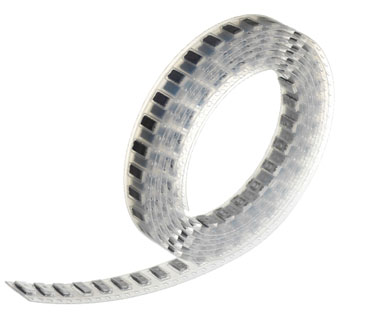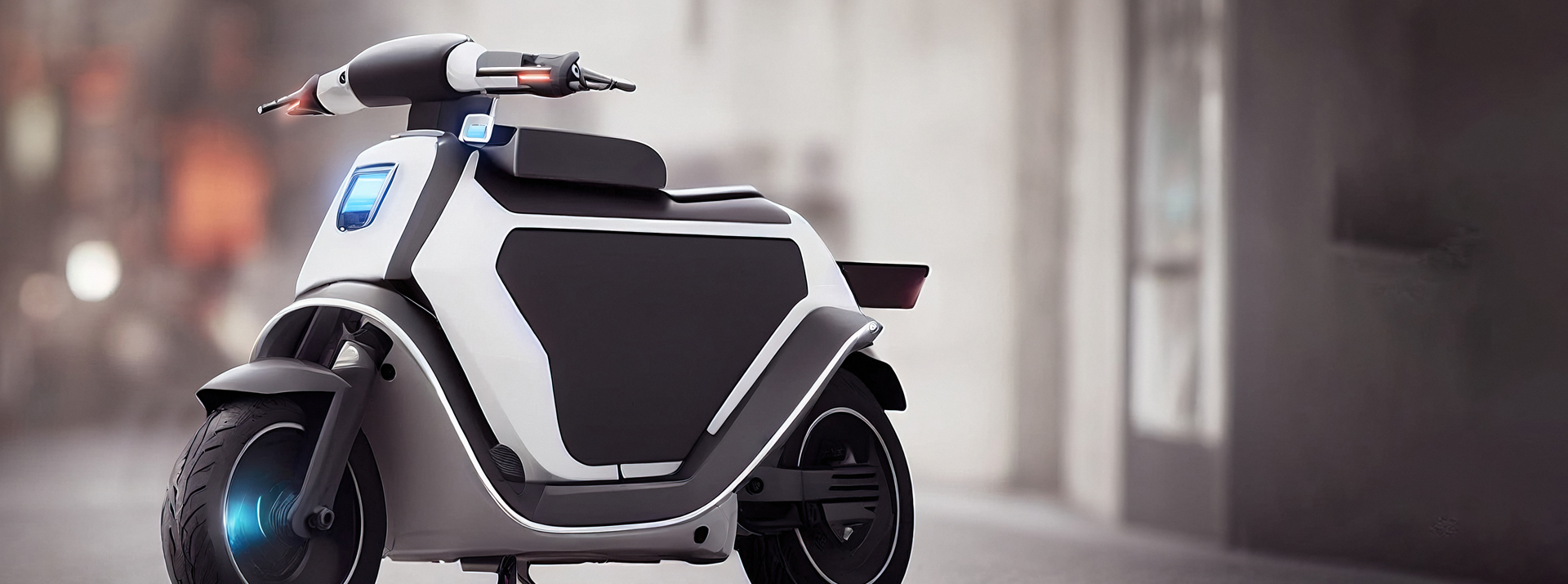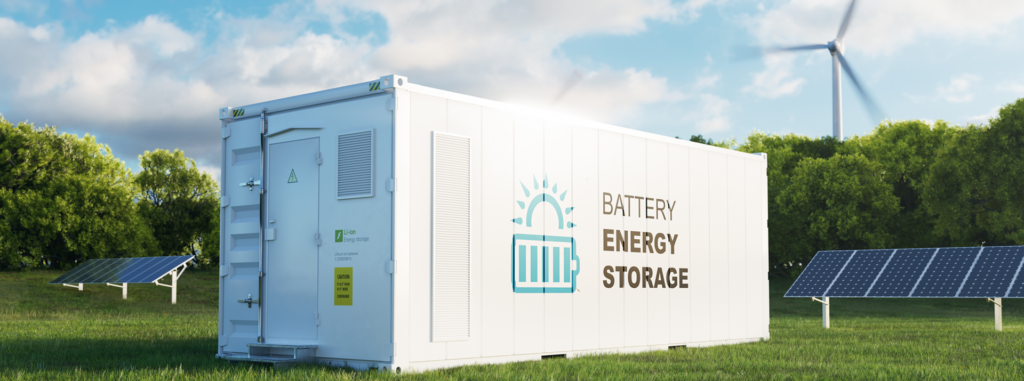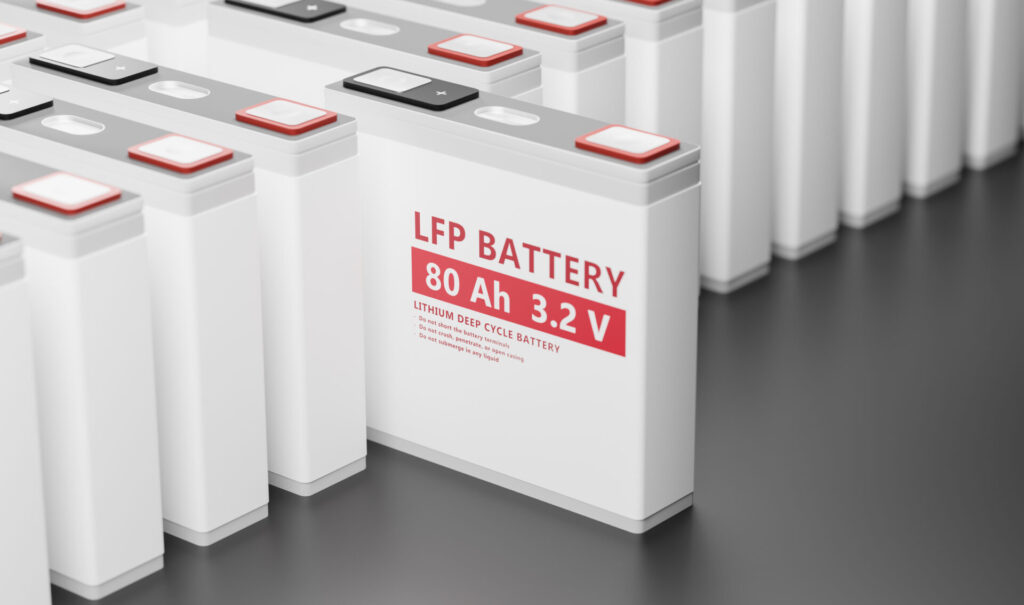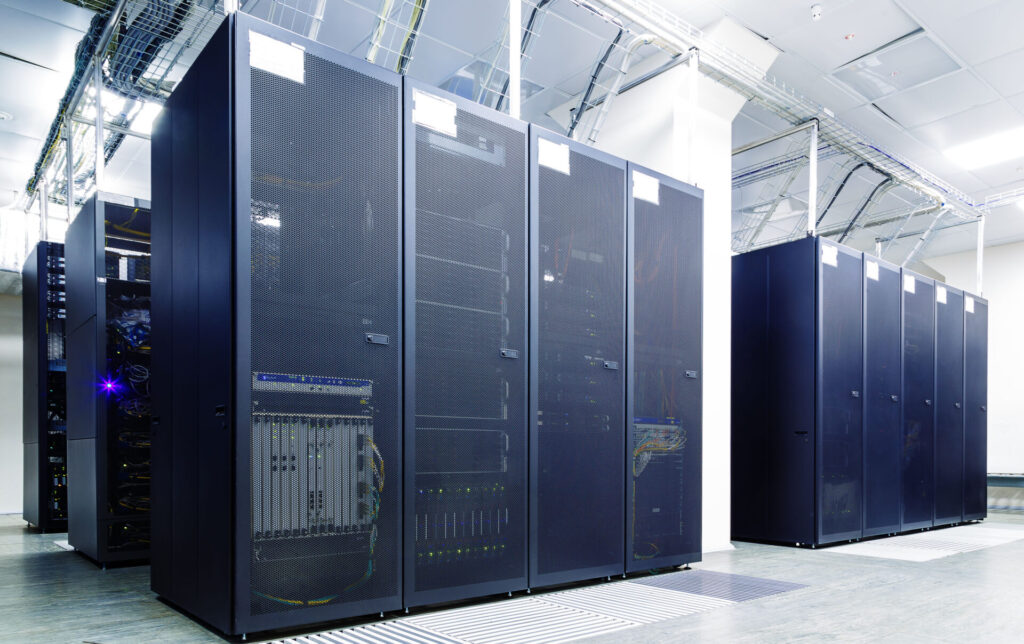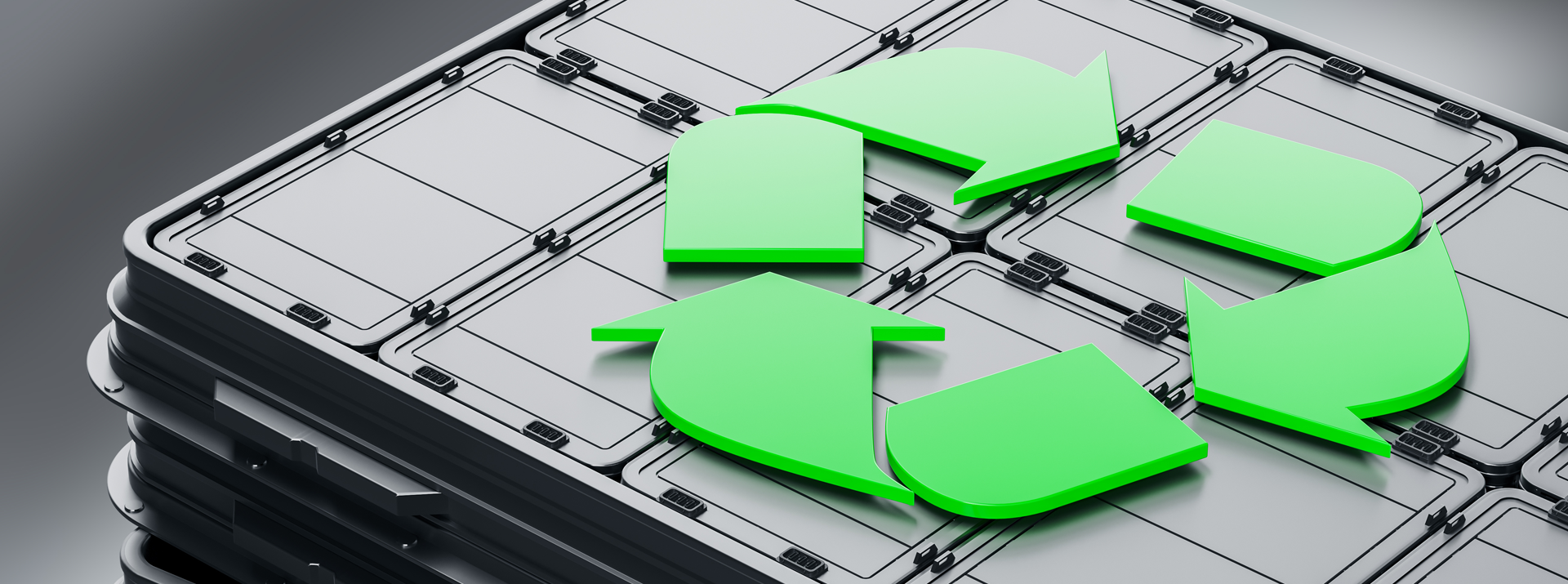
- 電子部品関連
持続可能な社会に向けたリチウムイオン電池のリサイクル&リユースとデクセリアルズの保護素子
目次
持続可能な社会に向けて
地球環境を守るため、使用後のリチウムイオン電池を効率的に処理し、資源を再活用することは、現代において重要な課題の一つとなっています。本記事では、次のような定義に従って、リチウムイオン電池のリサイクルとリユースの現状、ならびにその取り組みについて深掘りします。
・電池を解体して再利用すること=リサイクル
・電池そのものを再利用すること=リユース
加えて、2024年の導入が予定されているEU(欧州連合)の「バッテリーパスポート」制度と、デクセリアルズの保護素子にも光を当てます。
リチウムイオン電池の現在
持続可能な開発目標(SDGs)の達成に向けて、電気自動車(EV)の普及や再生可能エネルギーの活用が進むにつれ、リチウムイオン電池の利用量は大幅に増加しています。これらの電池に使用された貴重な資源を有効活用するため、使用済みの電池からレアメタルを回収してリサイクルする「都市鉱山」の取り組みや、EV用の大型電池を蓄電池などの別用途に転用するリユースが注目されています。
しかし、現状では世界の多くの国でリチウムイオン電池は廃棄時に単に埋め立て処分されています。日本では小型電池のリサイクルプロセスが一定程度確立されているものの、2022年時点の世界全体のリサイクル率は5%程度と非常に低い水準にとどまっています。
小型リチウムイオン電池のリサイクル
使用済みの小型リチウムイオン電池のリサイクルを行うには、まず適切に回収される必要があります。日本国内の多くの自治体ではリチウムイオン電池を通常のごみとは別に回収することをルール化しており、指定された回収方法・ルートで回収が行われます。
回収された電池は、真空加熱炉による焼却処理を経て、酸浸出、溶媒抽出、電解などの工程を通じてコバルトやニッケルといったレアメタルが回収され、再資源化されます。このプロセスでは、電解液の引火性や有害ガスの発生などに対する適切な対策が不可欠です。
一方、リチウムは再資源化による経済的メリットが少ないため、通常スラグとして扱われます。また、回収されるレアメタルも、必ずしも電池原料として再利用されるわけではありません。
電池メーカーとしても、カソード(放電時の正極材料)に含まれる金属の情報を表示する取り組みを進め、リサイクル処理の効率化に努めています。処理施設では、提供された情報をもとに使用済み電池を種類別に分別し、適切な処理が行われるようにしています。このような取り組みは、バッテリーリサイクルのさらなる効率化と、レアメタル資源の持続可能な利用を実現するために重要です。
大型リチウムイオン電池のリサイクル
電気自動車(EV)や定置用蓄電池に使われる大型リチウムイオン電池のリサイクルには、小型電池のリサイクルと比較して固有の難易度があります。大型電池はサイズが大きく、重量があるうえ、形状がメーカーや型式によって違い、外装が頑丈に設計されています。また、小型電池よりも感電や発火のリスクが高いことがリサイクルの難易度を高めています。
また、リサイクル過程においては、焼却や酸溶解、溶媒抽出処理を通じてコバルトやニッケルなどの金属資源を回収することは技術的には可能ですが、再生された資源の純度や品質を担保すること、そして資源価格に見合ったリサイクルコストを実現することが課題です。特に、回収された金属を電池原料として再利用する場合、その品質は非常に高い水準である必要があります。
さらに、リサイクルプロセスの開発や必要な設備投資、プラントの稼働にかかるコストも、リサイクル事業を左右する重要な要素です。また、コバルトやニッケルなどの価格変動の激しさは事業におけるリスクの一つとされています。
大型リチウムイオン電池のリサイクルは、持続可能なエネルギー利用の観点から非常に重要です。現在、世界中で研究と検討が進められており、実用化への取り組みが続いています。技術的、経済的課題の克服に成功すれば、資源の有効利用だけでなく、持続可能な社会への貢献となるでしょう。
欧州のバッテリーパスポート制度
2024年からの「バッテリーパスポート」制度導入により、欧州連合(EU)はバッテリーのライフサイクル全体にわたる情報の透明性と追跡可能性を向上させることを目指しています。この制度は、産業用および電気自動車(EV)用の2kWhを超える電池を対象とし、EU内で使用される輸入品も含まれます。バッテリーパスポートは、原材料の採掘から製造、使用、そしてリサイクルやリユース、最終的な廃棄に至るまでの全バリューチェーンの情報を統一されたデジタルプラットフォーム上で管理し、各段階の透明性を確保することを目的としています。
バッテリーパスポートでは、バッテリー本体に貼り付けられたQRコードを通じてパスポート情報にアクセスできることが義務付けられます。これにより、消費者や関連事業者は、バッテリーの詳細な情報を簡単に入手することが可能になります。
具体的にどの情報をどの程度記録するかについては、2024年までに技術的な規則が定められる予定ですが、現時点での改正案では以下の情報の記録が想定されています。
◆バッテリーパスポートに記録される情報
鉱山、材料原産地、材料生産者、部品生産者、セル生産者、モジュール生産者、最終製品生産者、重量、用途、化学的組成(材料比率等)、リサイクル再生材含有率、ID、種類、形式、製品名、性能、耐久性、製造時の炭素排出量、危険物、電池の健康診断、炭素排出影響、指令適合宣言、移動・収集、デューデリジェンス関連、保有履歴、ライフサイクル炭素排出量、ライフサイクルにおける環境影響
(出典元:Battery Passport)
リチウムイオン電池生産に必要なコバルトは約70%がコンゴ民主共和国 1ヶ国に集中しており、コンゴでは児童労働とそれに対するデューデリジェンスがたびたび問題になっています。材料の原産地およびデューデリジェンス規制は、欧州諸国が、自国を防ぐための1つの戦略とも言われています。
(出典元:バッテリーパスポートでEV覇権を目指す欧州の戦略 | ブライトイノベーション )
大型リチウムイオン電池のリユース(再利用)
電気自動車(EV)の市場が世界的に拡大する中、使用済みのEV用大型リチウムイオン電池のリユースが注目されています。しかし、EV用電池は比較的新しい製品で、確立されたリサイクル方法がまだありません。EV用電池はハーネスや制御用の基板、冷却機能のための部品などが接続されているため、小型電池で用いられてきた従来の手法ではリサイクルの効率が悪いといった技術的問題があります。
こうしたリサイクルの現状から、リユースとの組み合わせが現実的な選択肢となっています。大型電池のリユースでは、EVなどのモビリティ用途以外にも、大型蓄電設備やバックアップ電源など、さまざまな用途が期待されています。
実際、EUではEV用電池の使用期間15年までであれば、 7割以上がリサイクルではなく、リユースが想定されています。大型で高性能な電池は、一定期間の使用に伴い劣化が進みますが、引き続き電池として利用可能です。EVが車両としての役割を終えた後も、搭載されていた電池は残存容量に応じて別のEVの交換用電池、フォークリフトなどのモビリティ用や、工場・データセンター向けの定置型蓄電池などとして再利用できます。家庭用蓄電池としてのリユースも選択肢の一つです。
一方で、使用期間が長くなると劣化も進むためリユースは難しくなり、リユースの後にリサイクルを検討するケースが多くなります。
例えば日本の自動車メーカーは、パートナー企業と組んで、EVから取り出したバッテリーモジュールを分析・ランク分けし、EV用、定置用蓄電池用、バックアップ用などに分けてリユースする仕組みを構築しています。回収されたバッテリーの寿命は、回収されてから10年~15年程度と言われており、バックアップ蓄電池として使われてきた鉛電池よりはるかに長いと言われています。
このように大型電池のリユースは、電池の有効活用と環境負荷低減(廃棄物削減)の観点から、重要な役割を果たすと期待されています。
(出典元:電気自動車のバッテリーがおくる有意義なセカンドライフ | 日産ストーリーズ | 日産自動車企業情報サイト)
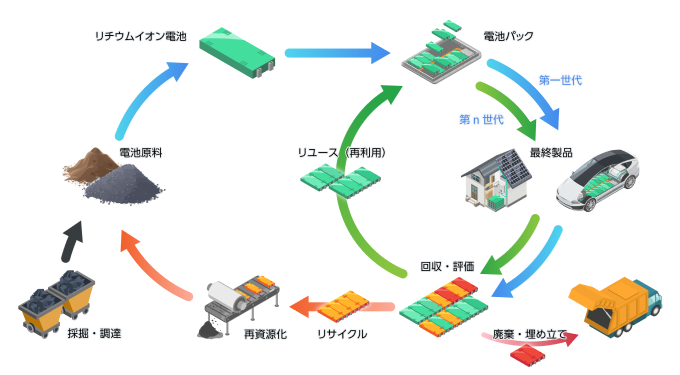
リチウムイオン電池のリユース時の保護素子の必要性
デクセリアルズのリチウムイオン電池用「セルフコントロールプロテクター(以下、SCP)」は、リチウムイオン電池の安全を監視するバッテリー管理システム(BMS)を構成する部品で、充電・放電時の異常があった際に電池を守るために回路を遮断する保護素子です。
SCPは物理的に回路を遮断するヒューズであり、保護動作によって生まれた回路遮断の痕跡(履歴)は、その電池に異常があった・危険が迫っていたことを示すと同時に、その痕跡は消えません。
一方、電界効果トランジスタ(FET)もバッテリーの保護素子としてよく使われる部品で、SCPと同様に異常を検知して回路を遮断します。ただし、SCPとの決定的な違いは、電気的に回路を遮断するため異常状態が解消されると回路が復帰する点です。
何らかの原因で電池パックの温度が異常に上昇した場合を想像してください。その時点でFETにより回路が遮断されます。ところが、電流が回路を流れなくなることで、時間の経過とともに温度が下がり異常は遠ざかっていきます。
最終的に異常状態が解消されればFETは回路を復帰させます。回路遮断も回路復帰もFETの正常動作であり、セルがダメージを受けた場合でもFET自身には異常に接した痕跡(履歴)は残りません。
新品(リサイクル・リユース前)のリチウムイオン電池を第一世代とすると、ノートパソコンや電動工具、電動バイクやドローンなどさまざまな電子機器で第一世代のリチウムイオン電池パックが使われています。第一世代の電池パックをリユースするとなった際、SCPが搭載されているものについては、そのパックを構成していたセルは、過充電や過電流といった電池を過度に劣化させ、さらには危険に至らしめる現象に接していないことになります。
前述した、リユース時を第二世代とするならば、第二世代の電池を構成するセルの履歴(素性)は安全を考える上で非常に重要な要素です。車に例えると、事故歴・修理歴などの履歴が分からない車から重要部品を転用(リユース)することは安全上のリスクであり、リユースの際には部品の素性を押さえておくべきと考えます。
蓄電池設備などで使われる電池パックでも安全性の担保は優先課題であり、リユース時に新たに保護素子を搭載するのはもちろんのこと、リユースの可能性がある第一世代のリチウムイオン電池の段階で保護素子が広まる余地は大いにあると考えます。
リユースされたリチウムイオン電池パックでは、すでにデクセリアルズの保護素子「セルフコントロールプロテクター(SCP)」が採用された例が複数あり、今後も増えていくものと考えています。また将来、リチウムイオン電池のリサイクルプロセスが確立され、素材を再利用した電池が登場した際にもやはり、安全確保のための保護素子の搭載が必要不可欠と考えています。
今後も、デクセリアルズでは、リチウムイオン電池の安全性の担保に貢献することで、電池市場とアプリケーションの広がりがもたらす豊かで持続可能な社会の実現に貢献していきます。
関連記事
- SHARE

当社の製品や製造技術に関する資料をご用意しています。
無料でお気軽にダウンロードいただけます。
お役立ち資料のダウンロードはこちら
当社の製品や製造技術に関する資料をご用意しています。
無料でお気軽にダウンロードいただけます。
お役立ち資料のダウンロードはこちら




